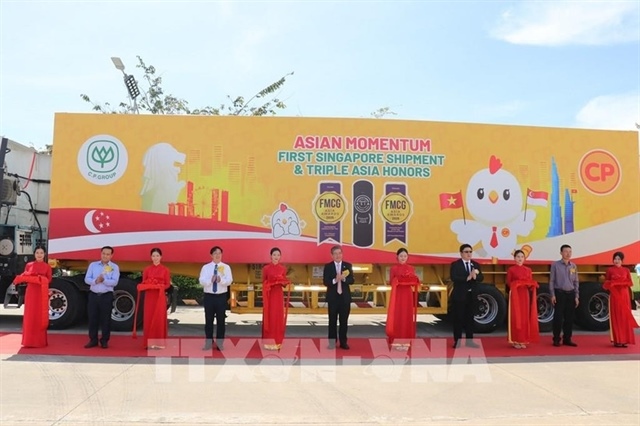Viet Nam failing to tap bio-fuel potential
Viet Nam failing to tap bio-fuel potential
Viet Nam has great potential in bio-mass and bio-gas production but has failed to exploit this yet, experts said.

More than 118 million tonnes of bio-mass are produced every year, mainly from husk and straw, bagasse and sugarcane leaves, corn residue, and others, Nguyen Duc Cuong of the Institute of Energy said.
A total of 4.8 billion cubic metres of bio-gas can be produced every year from husbandry activities, he told a Vietnamese-German forum on bio-energy held in HCM City yesterday.
Bio-mass and bio-gas development is encouraged to achieve the country's renewable energy target of 600MW per year and account for 9.4 per cent of total generation by 2030, up from 3.7 per cent last year, he said.
The four main sources of renewable energy contributing to the power grid are small hydropower, bio-mass, solid waste, and wind.
"Financial support and incentive mechanisms are in place to promote the development of bio-mass and bio-gas in Viet Nam," Cuong said.
"Price subsidies, new tariffs, and planning for bio-mass electricity development are in place to attract investors."
Prof Dr Ing. Mirko Barz from the University of Applied Sciences, Berlin, said: "As an agricultural country, Viet Nam has great potential to develop bio-gas from agricultural residues and specially grown energy crops."
Despite a large volume of potential bio-gas feedstock, only two major sources are currently used — animal manure and wastewater from cassava starch factories.
The huge potential of agricultural residues in Viet Nam is untapped, Barz said.
Only a few research activities for the optimised production and use of bio-gas on a medium and large scale are being undertaken.
The medium- and large-scale bio-gas sector in Viet Nam is in its infancy, with technologies and procedures mainly covering lagoons and unstirred plug-flow systems.
Around 200,000 household-scale systems have been installed, producing gas for cooking and lighting.
There is only one industrial-scale application, which has a capacity of 2MW.
A number of medium-scale applications (farm scale) using plug-flow technology were deployed in the last few years.
No standard model has been created yet for medium-scale bio-gas plants, with construction still being rudimentary and mostly using animal manure.
Advanced technologies with improved mixing devices and operated under constant mesophilic or even thermophilic conditions are ideal for efficient bio-gas production from agro-processing residues or energy crops as feedstock, Barz said.
A promising option is the production and feeding-in of bio-methane into the natural gas grid.
From 1ha of agricultural land, enough bio-methane can be produced for a car to travel 60,000 kilometres.
vietnamnews























